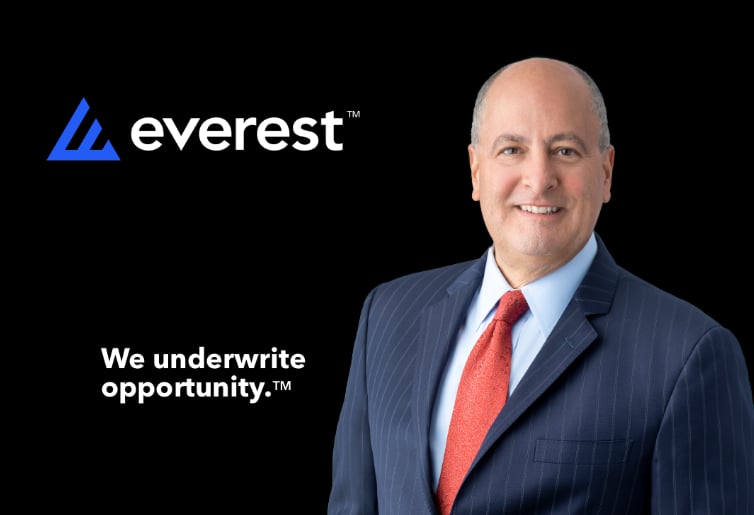A $100bn reinsurance capital supply-demand imbalance: Everest CEO Andrade

The industry is facing a roughly $100 billion gap between supply of reinsurance capital and the demand for it, but the demand side continues to expand with climate factors part of that equation, CEO of Everest Juan Andrade said during an interview with Bloomberg recently.
Speaking to the media company, Juan Andrade said that reinsurance is a “bright light in what’s happening in capital markets right now,” highlighting his own companies 25%, annualised, total shareholder return for the second-quarter of the year.
Driving profits are the higher reinsurance rates now available in the hard market environment, which Andrade’s comments suggest won’t be softening significantly any time soon.
Referring to Everest’s strong returns in Q2, CEO Andrade said, “That tells you sort of what we’re seeing in the opportunities that are out there, because of the uncertainty in the world right now, the heightened risk environment, geopolitical issues, climate change issues, etc.
“So, we’re pretty bullish about where the industry is going not only this year, but well into 2024 as well.”
Asked what is driving the reinsurance business today, Andrade noted the upswing in demand for cover, “If you think about the confluence of events that we’ve all lived through over the last few years, whether it’s the pandemic, the supply chain issues, inflation, climate change, all of that is driving demand, and again, as you said, we basically insure insurance companies.
“So, when you think about what’s driving our business right now, it’s the fact that these insurance companies are looking for protection for earnings volatility, essentially, so that increases the demand for our product.”
He went on to explain why the reinsurance industry is in a hard market right now.
Andrade said, “There’s been a significant price correction, you’re absolutely right, and it’s really down to a supply and demand imbalance. The bottom line is, with all the storms and all the activity that we’ve seen since 2017, reinsurance companies have deployed less capital into the market, so that’s constrained supply.”
Continuing to say, “The other thing that’s happened on the supply side is, a lot of third-party allocators, pension funds, sovereign wealth funds, that used to put money into our sector, have also pulled out, and so that’s created a supply crunch, if you will, in the industry.
“But at the same time, because of inflation, climate change, all of these other things, there’s more demand.
“So, there’s basically a gap of roughly $100 billion between supply and demand, and that’s what’s created the price correction that really started at the beginning of this year in a pretty significant way.”
Asked specifically about climate change, Everest CEO Andrade noted that it is a factor in higher reinsurance pricing.
“It affects us in a number of different ways. So yes, one is we’re charging more. That’s part of that price correction that we talked about. The second thing is we try to embed the latest science into our models to be able to do better predictions on where storms are going to develop, where they’re going to hit the coastlines, etc, etc,” he explained.
He went on to highlight Florida and California as specific problem areas, where companies are leaving the sector, as “At the end of the day, we all have shareholders or stakeholders, and we’re for profit business.”
But Andrade also said that the actions taken by the Florida legislature are positive, saying, “I think the governor of Florida and the legislature did a nice job with tort reform in Florida, because one of their significant issues was not only climate change and the storms that come out of that, but it’s also fraud and abuse in the system.”
Finally, Andrade was asked about the devastating wildfires in Maui, Hawaii and said, “What will happen as a result of this is prices will go up again, right? A lot of claims will be paid.
“I think, as you said, it’s about $3 to $3.2 billion in industry loss that is expected to come out of that fire. So, insurance companies will basically adjust their pricing because the risk is there, essentially.”







